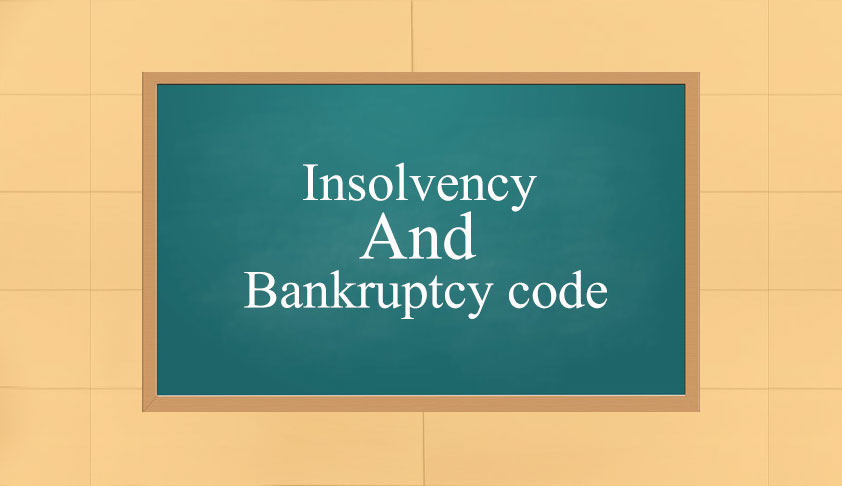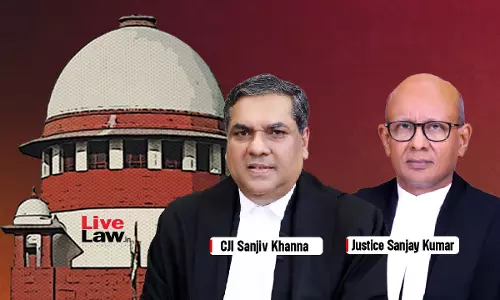Information Utilities 101 And A Primer On Compliance With RBI's Dec. 19, 2017 Notification On Information Utilities

The Reserve Bank of India on December 19, 2017, issued a notification directing all financial creditors to submit financial information and information relating to assets in relation to which any security interest has been created to the National E-Governance Services Ltd (NeSL), which is India's first registered information utility (IU). This article aims to address the fundamental concepts...
The Reserve Bank of India on December 19, 2017, issued a notification directing all financial creditors to submit financial information and information relating to assets in relation to which any security interest has been created to the National E-Governance Services Ltd (NeSL), which is India's first registered information utility (IU). This article aims to address the fundamental concepts and issues surrounding IUs and to provide insights into how financial creditors can comply with this RBI notification.
What are information utilities?
In May 2016, the Government of India enacted its first consolidated law on insolvency and bankruptcy, i.e. The Insolvency and Bankruptcy Code, 2016 ("Code"). The Code has been enacted to address and resolve the crisis of growing non-performing assets ("NPA") plaguing India Inc.
The Code provides for a corporate insolvency resolution process ("CIRP"). The CIRP begins with an application by the creditor or the corporate debtor on occurrence of a default, and eventually culminates into a resolution plan designed to restructure the debt. The Code stipulates a time period of 180 days for the completion of the CIRP, which if not completed within the prescribed time period, can trigger automatic liquidation of the corporate debtor.
The Bankruptcy Law Reforms Committee ("Committee"), while recommending the enactment of the Code, in its report, also noted the need for having accurate and undisputed financial information regarding the insolvent corporate debtor before the commencement of the CIRP against it. The Committee was of the view that under the previous, highly fragmented insolvency framework, substantial time was spent collating and organizing financial information regarding defaulting corporate debtors.
To save time, the Committee recommended establishing Information Utilities (IUs) in India. Conceptually, an IU is a company that is in charge of collecting, collating and disseminating financial information of corporate debtors.
On March 31, 2017, the Indian insolvency and bankruptcy regulator i.e. The Insolvency and Bankruptcy Board of India ("Board"), enacted the Insolvency and Bankruptcy Board of India (Information Utilities) Regulations, 2017 ("IU Regulations"), which came into effect on April 1, 2017.
Since IUs specifically collect, collate and disseminate financial information, the next question will address the concept of financial information as has been defined under the Code.
What is financial information?
Financial information in relation to a person (note that the term "person" as defined under sub-section 23 of Section 3 of the Code, also includes a company) has been defined under sub-section 3 of Section 13 of the Code to mean "one or more of the following":
"(a) Records of the debt of the person;
(b) Records of liabilities when the person is solvent;
(c) Records of assets of person over which security interest has been created;
(d) Records, if any, of instances of default by the person against any debt;
(e) Records of the balance sheet and cash-flow statements of the person; and
(f) Such other information as may be specified."
Financial Creditors and Information Utilities
Under sub-section (2) of Section 215 of the Code, financial creditors have been mandated to submit all financial information and information relating to the assets of any corporate debtor in which they have created a security interest. This information needs to be submitted to the IU in accordance with the IU Regulations.
The Code obligates financial creditors to submit financial information to IUs. The term financial creditor has been defined under sub-section 7 of §5 of the Code to mean:
"Any person to whom a financial debt is owed and includes a person to whom such debt has been legally assigned or transferred to."
Simply put, financial creditor means a person to whom a financial debt is owed by the corporate debtor. This paves way for two questions - one, who is a "person" under the Code? Two, what is "financial debt"?
The term "person" has been defined under sub-section 23 of Section 3 of the Code to include:
"(a) An individual;
(b) A Hindu Undivided Family;
(c) A company;
(d) A trust;
(e) A partnership;
(f) A limited liability partnership;
(g) Any other entity established under a statute, and
(h) A person resident outside India."
"Financial debt" has been defined under sub section 8 of Section 5 of the Code to mean:-
"A debt alongwith interest, if any, which is disbursed against the consideration for the time value of money and includes—
(a) Money borrowed against the payment of interest;
(b) Any amount raised by acceptance under any acceptance credit facility or its de-materialized equivalent;
(c) Any amount raised pursuant to any note purchase facility or the issue of bonds, notes, debentures, loan stock or any similar instrument;
(d) The amount of any liability in respect of any lease or hire purchase contract which is deemed as a finance or capital lease under the Indian Accounting Standards or such other accounting standards as may be prescribed;
(e) Receivables sold or discounted other than any receivables sold on nonrecourse basis;
(f) Any amount raised under any other transaction, including any forward sale or purchase agreement, having the commercial effect of a borrowing;
(g) Any derivative transaction entered into in connection with protection against or benefit from fluctuation in any rate or price and for calculating the value of any derivative transaction, only the market value of such transaction shall be taken into account;
(h) Any counter-indemnity obligation in respect of a guarantee, indemnity, bond, documentary letter of credit or any other instrument issued by a bank or financial institution;
(i) The amount of any liability in respect of any of the guarantee or indemnity for any of the items referred to in sub-clauses (a) to (h) of this clause."
The National Company Law Tribunal, in the matter of Nikhil Mehta & others v. AMR Infrastructures Ltd, discussed the concept of "financial debt" for the first time. In the Nikhil Mehta case, the tribunal rejected the application of alleged financial creditors for commencing the CIRP against the debtor, and held that the essential requirement for a debt to be considered a financial debt under the Code is that it has to be disbursed against consideration for time value of money. The court, while relying on the Black's Law Dictionary for the definition of time value of money, further held that time value of money is the price associated with the length of time that an investor must wait until an investment matures or the related income is earned.
Do foreign lenders need to comply with this RBI notification?
"Financial creditor" includes a person to whom a financial debt is owed; including persons residing outside India. Therefore, prima facie, it can be concluded that even foreign lenders qualifying as financial creditors, are required to submit financial information to an IU in compliance with sub-section (2) of Section 215 of the Code.
Does India have any information utilities?
On September 25, 2017, the Board registered National E-Governance Services Limited (NeSL) as India's first IU. As of today, India only has one IU i.e. NeSL.
What are the core services that an information utility can provide?
As per sub-section 9 of §3 of the Code, an IU may provide the following core services:
- Electronically accepting financial information;
- Recording of financial information in a safe and accurate manner;
- Authenticating and verifying any financial information that has been submitted;
- Providing access to information stored with it to authorized persons.
How should one submit information to an IU?
A person who intends to submit information to an IU should submit a completed Form C that is available in the Schedule to the IU Regulations. Some of the key disclosures that need to be made in Form C are as under:
[A] DETAILS OF THE DEBT
- Loan agreement number/loan account number;
- Date of loan agreement;
- Nature of the debt (operational/financial);
- Currency of the debt;
- Date(s) of disbursement, maturity, expiry and renewal (if any) of the debt;
- Amount of debt owed on the date of creation and amount of debt owed at the time of filing Form C with the IU;
- Rate of interest (as updated from time to time);
- Security on debt;
- Details of terms of demand loan (if any).
[B] DETAILS RELATING TO CREATION OF SECURITY ON DEBT
- Security Interest Type (Mortgage, charge, hypothecation, assignment, pledge etc.);
- Asset type (movable, immovable, intangible);
- Type of security (vehicle, inventory, receivable, equipment, plot etc.);
- Joint security interest (yes or no);
- Number of Security Interest Holders;
- Security Interest ID (as per CERSAI);
How should a person update or modify or rectify errors (if any) in the financial information submitted to an IU?
Under sub-section (1) of §216 of the Code, an application to the IU needs to be made explaining the reasons for updating, modifying, or rectifying errors (if any) in the financial information, in such form and manner and within such time as may be specified.
Information about book on information utilities
I feel very happy and humbled to inform you that I have penned a book on information utilities titled as "Handbook on Information Utilities" and you may refer to it if you want further clarity on IUs if you so desire.
Some of the key highlights and features of this book are:
- It includes a detailed explanation (along with legal references) of the applicable laws, procedure and compliances pertaining to information utilities.
- It includes key recommendations and findings in relation to information utilities from the final report of the Committee.
- It includes relevant extracts from the report of Working Group No. 4 (constituted by the Ministry of Corporate Affairs) on information utilities.
- It also includes the text of the relevant sections on IUs from the Code and the IU Regulations.
[This article has been penned solely for informative purposes and nothing in this article should be construed as legal advice. The author disclaims any responsibility for any action taken by any reader on the basis of this article. For obtaining complete legal clarity on information utilities, readers are encouraged to refer to the relevant provisions of The Insolvency and Bankruptcy Code, 2016 and the rules and regulations issued thereunder]
Pranav Khatavkar is presently a candidate for Master of Laws (LL.M.) at Northwestern, Pritzker School of Law. His area of specialization is bankruptcy law.
[The opinions expressed in this article are the personal opinions of the author. The facts and opinions appearing in the article do not reflect the views of LiveLaw and LiveLaw does not assume any responsibility or liability for the same]
Useful Links
- Website of NeSL- https://www.nesl.co.in/
- Conceptual framework of IUs as explained on the website of NeSL-https://www.nesl.co.in/conceptual-framework/
- Role of NeSL as an IU-https://www.nesl.co.in/our-role/
- FAQs on NeSL's role as an IU-https://www.nesl.co.in/faqs/
- Procedure for information authentication by an IU- https://www.nesl.co.in/information-authentication/
- Fee structure for NeSL's role as an IU-https://www.nesl.co.in/fee-structure/
- Website of the Insolvency and Bankruptcy Board of India-http://ibbi.gov.in/




